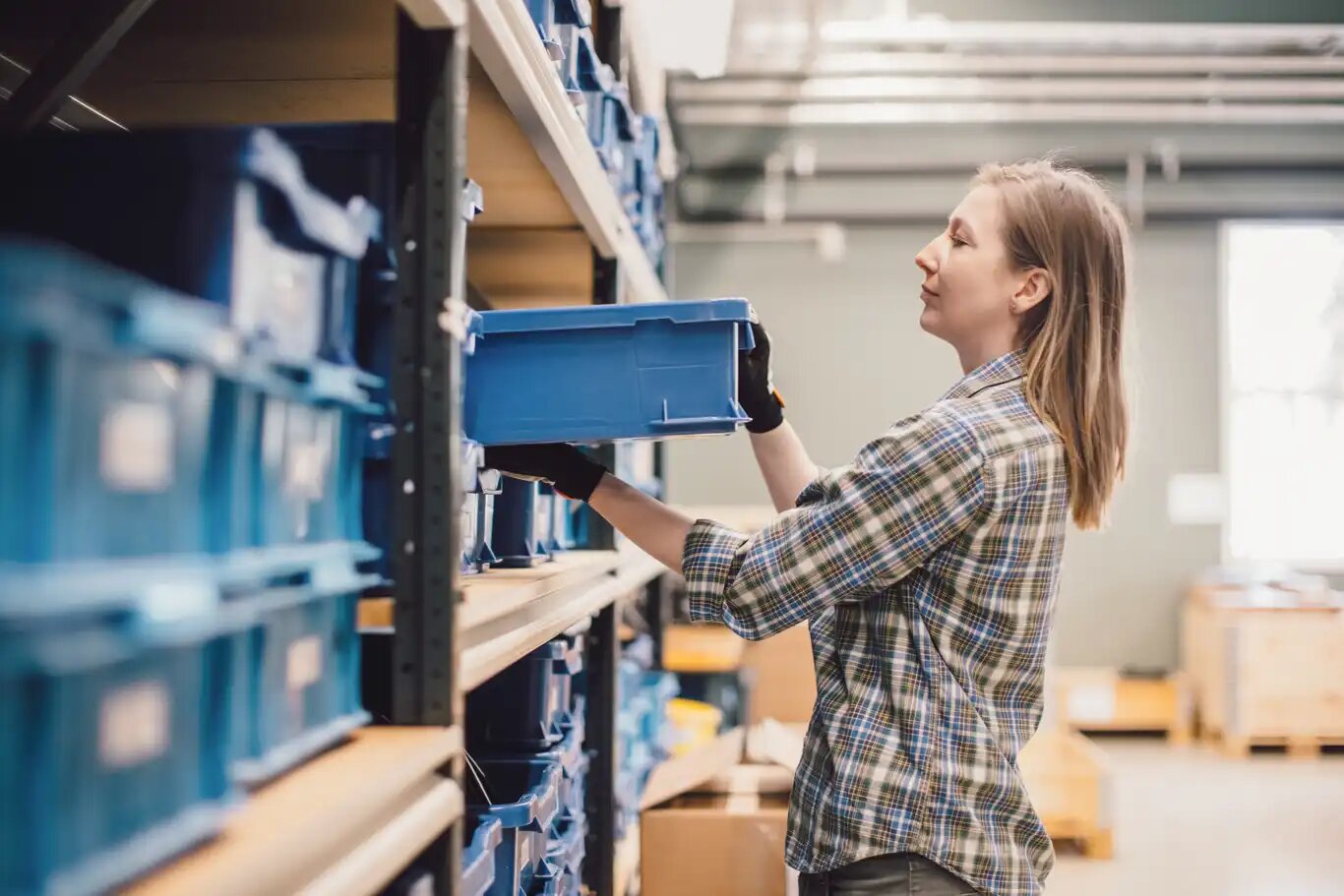Six trends that will shape e-commerce logistics in 2023

There’s a new year of opportunities and challenges ahead in the world of e-commerce for SMEs (small-medium enterprises). Fuelled by the pandemic, e-commerce has been booming. From accounting for 7.4% of total global retail sales in 2015, it reached almost 19% in 2021 – but as a consequence of inflation, we’ve seen a market downturn in the past year that could put a stick in the wheel of the boom. So, what e-commerce trends can you expect to see in 2023?
1) Greening the e-commerce supply chain
Customers might be fan of the ease and flexibility offered by e-commerce, but the environment probably isn’t. Notably, returns pose a challenge. At least 30% of all online orders are returned compared to approximately 9% in brick-and-mortar stores, leaving a significant carbon footprint when returns are transported back and forth or simply get discarded instead of resold. In the US alone, 15 million metric tons of CO2 are emitted from the transportation of returns each year.
Fortunately, prioritising decarbonisation is going from a nice-to-have to a must-have in any business strategy to reduce emissions along the e-commerce supply chain. In fact, sustainability reporting is increasingly becoming a requirement. In the EU, the Corporate Sustainability Reporting Directive (CSRD) entered into force in January 2023. This means that approximately 50 000 large companies and listed SMEs will be required to report on sustainability, including emissions. As a result, there’s a growing need for emissions visibility where technology such an emissions dashboard can help by providing the insights and clarity that are a prerequisite for taking action.
One such action should be to make reverse logistics more sustainable. Providing more detailed product information and images can, for example, be a lever for sustainability to help customers get it right the first time round and reduce the need for returns. Emissions can also be reduced by using local warehouses and recyclable packaging materials instead of shipping returns far and wide to a central warehouse. Furthermore, technologies like returns management software can improve supply chain visibility by identifying inefficiencies, such as cases where certain products have a high return rate.
2) Upgrade e-commerce with new supply chain technology
Digitalisation continues to transform industries across the globe, so it should come as no surprise that supply chain technology is also bound for an upgrade or two – both for SMEs to optimise their supply chains, but also to stay ahead of competitors.
Artificial intelligence, in particular, has made a substantial impact on e-commerce as an important tool to improve customers service when it comes to intelligent product recommendations, personalisation, virtual assistants, and chatbots. Furthermore, e-commerce supply chains can benefit from technologies such as machine learning for better planning with demand forecasting, and the use of data analytics to optimise and automate inventory management. With augmented reality, businesses can also provide a more immersive introduction to a product, for example, when cosmetics brands use software that makes it possible for customers to “try on” products before buying.
3) Your customers expect more of your online store
COVID-19 made people accustomed to online shopping. Global retail sales have gone from amounting to approximately 1.9 trillion US dollars worldwide in 2015 to 5.2 trillion US dollars in 2021. Gazing into the future, global e-commerce retail sales are expecting to surpass a whopping 8 trillion dollars in 2026.
As e-commerce grows, so do the expectations of your digital customers within a variety of areas, such as:
- Seamless buying experience
- Flexible returns
- Multiple payment methods
- Ethical consumption
Consumers expect access to a wide range of goods, cheap and fast delivery, and free, easy returns. They want a seamless digital experience with a variety of options in terms of home delivery, pick-up, and click and collect. When it comes to deliveries, 2023 will be the year for Out of Home delivery (OOH) where customers pick up their order at, for example, a parcel locker. More and more service points emerge, allowing customers to collect their packages near their homes or on their commuting paths at a time they find convenient. Not only is this more cost-efficient for retailers and logistics providers – it can also reduce the carbon footprint by up to 2/3 in urban areas and even more in rural areas.
Similarly, customers also expect flexibility when it comes to the availability of different payment methods, including digital wallets like Apple and Google Pay as well as buy now, pay later options such as Klarna.
Especially among Gen Z, we also see an increased demand for sustainability and movement towards ethical consumption. That is, purchasing products that minimise social and environmental damage – and if you manage to meet this demand and win over the next generation of customers, you might strike gold, as 71% of Gen Z say they’ll stay loyal to and advocate for brands they trust.
4) Get ahead with an omnichannel logistics strategy
One of the up-and-rising tools to facilitate a more seamless flow for your customers lies in adopting an omnichannel strategy to create a unified experience across multiple touchpoints such as in-store, online, mobile, and social media. Acknowledging the need for this approach, 55% of SMEs are preparing to adopt new omnichannel technology in the year ahead.
One of the great opportunities lies in the rise of social commerce. In fact, Gen Z use TikTok more than Google in the search for new products. 58% of Gen Z and 45% of Millennials use social media for online shopping so there’s a lot to gain from engaging customers across multiple channels.
5) New global markets in the e-commerce horizon for SMEs
Sure, the past years have brought a challenge or two along the way, but that doesn’t mean you can’t make 2023 the year where you conquer the world – by expanding internationally. Only 25% of EU-based SMEs export to other EU-countries and even fewer beyond the EU. Meanwhile, 75% of European online shoppers make purchases from a web shop abroad, so there’s a lot of opportunity to gain. To realise your global ambitions, a logistics provider can be a valuable partner to help you navigate through the complexities of customs, regulations, transportation, warehousing, etc. to make sure you don’t miss out new markets across borders.
6) Enhance supply chain resilience to expect the unexpected
Those of you who’ve read Lemony Snicket’s A Series of Unfortunate Events will recognise the frustration of continuously having tumultuous incidents hiding behind the corner. If the past years have taught us anything, it’s the need for supply chain resilience to survive and thrive in times of global instability – from a pandemic and blocking of the Suez Canal to inflation, energy crisis, and a war in Ukraine. One of the consequences in e-commerce has been an average market downturn of around 10% in the past year, and a shift in consumer spending prompted by higher costs and uncertainty.
Fortunately, it’s not all doom and gloom, as there are strategies to help you make the most of 2023 (and the years to come), such as building strong partnerships with suppliers, conducting risk assessments to identify potential weak spots, and leveraging data and technology to gain supply chain visibility and stay ahead of potential disruptions.
Source : twill.net



